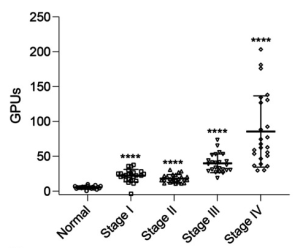A group from Institute for Glycomics, Griffith University, Gold Coast campus, Southport, QLD 4222 Australia, etc. has reported that Neu5Gc serum biomarkers are a promising new tool for early detection and disease monitoring for breast cancer.
https://www.ncbi.nlm.nih.gov/pmc/articles/PMC8962556/
A new lectin is derived from the B-subunit of the Shiga toxigenic Escherichia coli (STEC) Subtilase cytotoxin (SubAB), which recognizes α2–3 linked Neu5Gc. This lectin was engineered to to expand the recognition from only α2–3-linked Neu5Gc to include both α2–3 and α2–6 Neu5Gc linkages, and named as SubB2M. A non-sialic acid binding version named as SubBA12 was also enginnered by replacing Ser12 with Ala12. Mutation of this Ser residue abolishes interactions with the C1 carboxylate group of sialic acid and thus the SubBA12 mutant cannot bind any sialylated glycans.
SPR biosensor was used to detect serum Neu5Gc levels of breast cancer patients and healthy persons.
In order to eliminate non-specific bindings, SPR signal of SubBA12 immobilized sensor chip was subtracted from that of SubB2M immobilized one.
As a result, it was shown that serum Neu5Gc levels can discriminate breast cancer patients clearly from cancer-free individuals with high specificity (100%) and sensitivity (98.96%).

